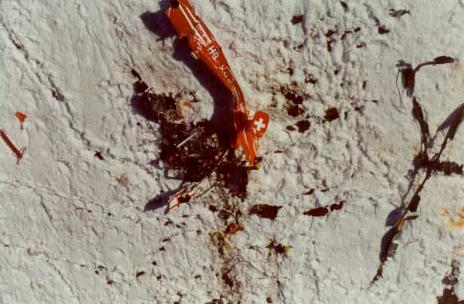The the recent crash of Air France 447 over the South Atlantic while en route from Rio de Janeiro to Paris and its similarities to the crash of Swissair 111 on September 2, 1998 off Nova Scotia while en route from New York City to Geneva, has prompted a re-examination of suspicious events surrounding the Swissair disaster.
On June 8, 2009, WMR reported: "On September 5, 1998, just three days after Swissair 11 plunged into the Atlantic off Nova Scotia, Daniel Dayer, the Swiss ambassador to Canada, who was involved in negotiating settlements with Canadian Holocaust survivors and heirs, was killed after he fell in front of an approaching train in Switzerland.
Dayer was returning to Geneva from where he was to fly back to Canada in order to resume his duties in Ottawa. Dayer fell on to the tracks as the train from Brig to Geneva was approaching Dayer's train station at Sion in the Swiss canton of Valais. Dayer was said to have tripped and fallen in front of the locomotive and was killed instantly. Police said the reason for Dayer's fall was 'unclear.'"
The Swissair flight was known as the "UN shuttle" because of the number of UN diplomats and personnel it transported between UN headquarters in New York and UN specialized agencies in Geneva. A top envoy of the UN Secretary General for the Great Lakes region of Africa and a prominent World Health Organization AIDS researcher died in the Swissair crash.
Although the cause of the Swissair crash was determined to have been a fire that started with an electrical short in the on-board entertainment system, others are not so sure, considering not only the suspicious death of Ambassador Dayer but that of a Swissair crash investigator with the BFU, the Swiss Council for Accident Prevention, the counterpart of the U.S. National Transportation Safety Board (NTSB).
On the night of October 11, 1998, there was a break-in at the offices of Swissair Chief Executive Officer Jeffrey Katz, an American, and Switzerland's Neue Zurcher Zeitung speculated that the burglars were trying to steal Swissair's preliminary report on the cause of the crash of their aircraft. Two days later, on October 13, Guido Hirni, one of the Swiss BFU investigators who had been working with the lead investigative agency, the Transportation Safety Board of Canada, was killed when the Alouette III helicopter he was flying alone crashed on the Italian side of the Blinnenhorn mountain in the Swiss Alps. In February 2002, Swiss investigators concluded that Hirni died from a "cardiac defect" that caused "sudden nausea." Hirni had previously speculated that sabotage was a possibility in the crash of Swissair 111.
Swiss TV reported that Hirni "reached prominence after the crash in Halifax”.

Swissair 111 crash investigator's Alouette III helicopter after he experienced a "cardiac" event resulting in the slamming of his helicopter into the side of a Swiss Alpine mountain.
In its official report, the Transportation Safety Board of Canada concluded, "Aircraft certification standards for material flammability were inadequate in that they allowed the use of materials that could be ignited and sustain or propagate fire. Consequently, flammable material propagated a fire that started above the ceiling on the right side of the cockpit near the cockpit rear wall. The fire spread and intensified rapidly to the extent that it degraded aircraft systems and the cockpit environment, and ultimately led to the loss of control of the aircraft."
